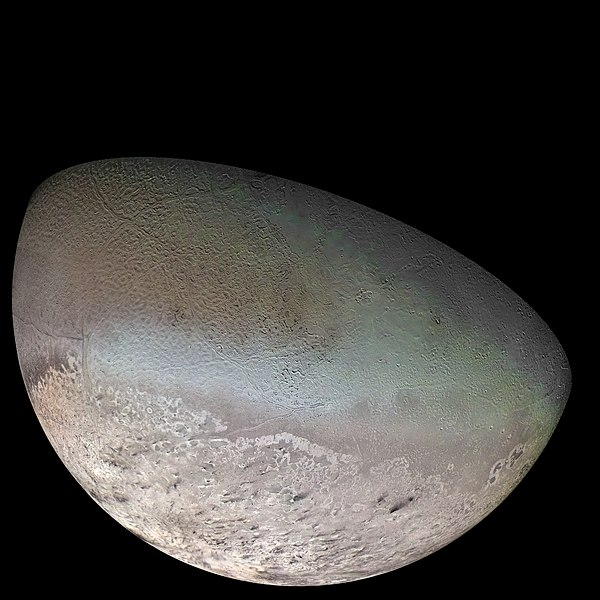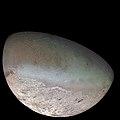Ficheiro:Triton moon mosaic Voyager 2 (large).jpg

Dimensões desta antevisão: 600 × 600 píxeis. Outras resoluções: 240 × 240 píxeis | 480 × 480 píxeis | 768 × 768 píxeis | 1 024 × 1 024 píxeis | 2 048 × 2 048 píxeis | 4 700 × 4 700 píxeis.
Imagem numa resolução maior (4 700 × 4 700 píxeis, tamanho: 12,11 MB, tipo MIME: image/jpeg)
Histórico do ficheiro
Clique uma data e hora para ver o ficheiro tal como ele se encontrava nessa altura.
| Data e hora | Miniatura | Dimensões | Utilizador | Comentário | |
|---|---|---|---|---|---|
| atual | 19h40min de 10 de outubro de 2011 |  | 4 700 × 4 700 (12,11 MB) | Jbarta | Minimally compressed JPG from TIFF original at NASA. This image has already been colored by NASA. I think we have no business trying to "fix" the coloring. The only alteration made from the NASA original is to enlarge the canvas to enclose the complete sp |
| 21h00min de 1 de janeiro de 2010 |  | 4 600 × 4 600 (2,81 MB) | Supportstorm | Image Adjustments: Auto levels on contrast and color | |
| 21h59min de 18 de fevereiro de 2008 |  | 4 600 × 4 600 (1,71 MB) | Kaldari | same image, better dimensions | |
| 04h59min de 8 de abril de 2005 |  | 4 500 × 3 500 (1,96 MB) | Bricktop | same image, higher resolution | |
| 17h13min de 3 de abril de 2005 |  | 1 024 × 796 (150 kB) | Smartech~commonswiki | A color mosaic of Triton, Neptune's moon (large). Taken by Voyager 2 in 1989. Color was synthesized by combining high-resolution images taken through orange, violet, and ultraviolet filters; these images were displayed as red, green, and blue images and |
Utilização local do ficheiro
As seguintes 8 páginas usam este ficheiro:
Utilização global do ficheiro
As seguintes wikis usam este ficheiro:
- af.wikipedia.org
- an.wikipedia.org
- ar.wikipedia.org
- ary.wikipedia.org
- arz.wikipedia.org
- ast.wikipedia.org
- azb.wikipedia.org
- az.wikipedia.org
- be-tarask.wikipedia.org
- be.wikipedia.org
- bg.wikipedia.org
- bn.wikipedia.org
- bn.wikibooks.org
- bs.wikipedia.org
- ca.wikipedia.org
- Neptú (planeta)
- Satèl·lit natural
- Satèl·lits de Neptú
- Voyager 2
- Cronologia del descobriment dels planetes del sistema solar i dels seus satèl·lits naturals
- Viquipèdia:Articles espacials seleccionats
- Plantilla:Article espacial 01
- Llista d'objectes del sistema solar en equilibri hidroestàtic
- Llista de satèl·lits naturals
- Nomenclatura dels satèl·lits naturals
Ver mais utilizações globais deste ficheiro.

